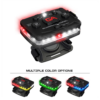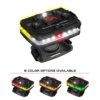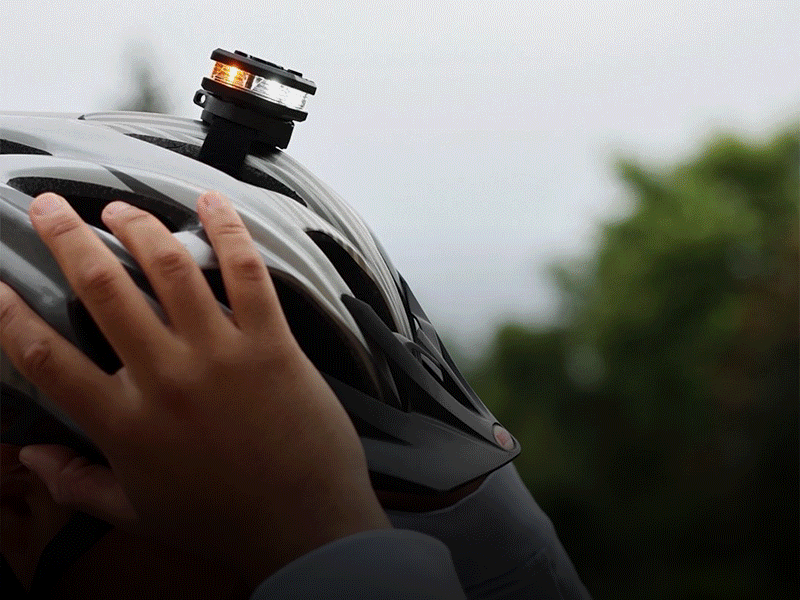Tow-Truck Drivers Struck by Cars: A Growing Danger
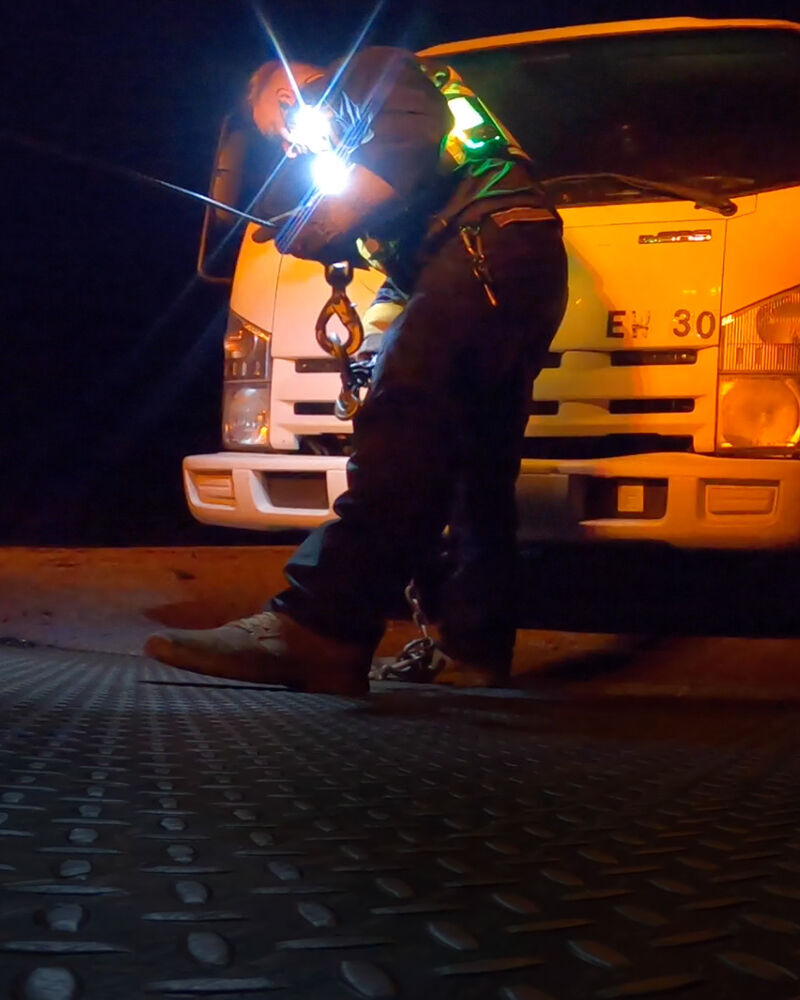
For tow-truck drivers, hazards come with every call. Blinding glare, speeding drivers, poor weather, and highway chaos all pose daily risks that often go overlooked. While night-shift safety gets the most attention, serious injuries and fatalities happen during daylight recoveries as well.
How many tow-truck drivers die a year? Far too many. According to one source, a tow operator is killed on the job every six days.1
Most of these tow-truck driver deaths occur on interstate or other high-speed highways, and data from the AAA Foundation for Traffic Safety suggests a rising trend in annual fatalities.2
For tow-truck business owners and fleet managers, building a culture of safety means going beyond reflective vests and cones. It means looking closely at overlooked hazards such as daylight visibility gaps, weather interference, and poor scene awareness, among others. To combat those hazards, it’s important to crews with gear that performs under real-world pressure.
Safety Challenges Go Beyond Nightfall
A large percentage of training and gear policies are focused on night operations. But tow-truck accidents don’t stop at sunrise.
Why? Because daylight can bring its own set of hazards:
- Sun glare reduces reaction times, making roadside scenes harder to process at high speeds.
- Traffic congestion on busy highways often forces recovery teams to operate in narrower margins.
- Construction zones introduce unpredictable reroutes or reduced shoulder space.
- Many drivers mistakenly believe that daytime means it’s safe enough to ignore flashing lights ahead.
While it’s true that most fatal crashes involving roadside assistance providers happen at night, 34% occur during daylight hours, according to the AAA Foundation.2 That’s nearly one in three fatalities happening when visibility is assumed to be “good enough.” These numbers reinforce the need for active daytime visibility.
Distraction and Glare During Daylight Recoveries
Drivers checking GPS, eating lunch behind the wheel, or replying to texts aren’t paying attention to the stalled car ahead or to your crew working the scene. Add harsh sun angles or dirty windshields, and visibility drops even further.
The inattentiveness of other drivers on the road also poses a threat. Despite widespread laws protecting road service providers, compliance remains low. A 2021 report from the AAA Foundation found that 23% of surveyed drivers were unaware of their state’s Move Over law.3 If you’re a tow truck provider, that misunderstanding can mean life-or-death consequences, regardless of the time of day.
Hazards in Bad Weather Conditions
Rain, sleet, fog, and snow all reduce visibility and increase driver stopping distances. Add in standing water or icy patches, and a standard recovery can quickly become dangerous. Spray from tires coats reflectors, cones, and even vehicle lights, which makes them harder to see from a distance.
These conditions create a particular challenge when the operator is away from the tow truck. Without enhanced visibility gear, they may blend into the background, even in daylight.
But don’t underestimate the hazards of fair-weather conditions. The AAA Foundation found that 84% of fatal incidentsoccurred in crashes with no indication of precipitation or slippery road conditions.2 In other words, most of these tragedies happen in conditions that look deceptively safe.
Elevating Visibility: Strategies for Safer Recoveries
These practical approaches help ensure tow operators are seen early and clearly, no matter the environment:
Dynamic Lighting for Unpredictable Scenes
Scene lighting should adjust based on location, traffic flow, and visibility conditions. With Guardian Angel devices, operators can change light modes on the fly:
- Use solid white for hands-free work illumination.
- Use flashing white, green, and yellow to signal danger zones to approaching drivers.
- Use rear-only flashing when standing between a truck and traffic.
Some teams designate light colors based on role — red for recovery lead, white for spotter, etc. — to improve coordination without the need for shouting or radios. The goal is to make the operator stand out, not just the vehicle.
Worker Visibility vs. Vehicle Visibility
It’s common to see trucks decked out with strobes, reflectors, and LED bars, but the operator 15 feet down the road may have nothing but a vest and a headlamp. That gap is where preventable injuries occur.
Roadside assistance providers should have wearable lighting that stays with them wherever they move. Shoulder-mounted Guardian Angel devices offer 360-degree visibility from over a mile away — that’s ideal for operators who need to approach vehicles or walk around a scene.
Elevated Visual Cues That Buy Reaction Time
Even a second or two of extra visibility can be the difference between a close call and a collision. That’s why mounting lights at driver eye-level makes such a difference.
The Magnetic Cone Mount Attachment allows operators to elevate Guardian Angel lights on standard traffic cones, thereby improving early visibility without interfering with official traffic control.
Use early warning cones 50–100 feet upstream with lights mounted to guide drivers into gradual deceleration. (However, you should always be sure to comply with state laws relating to the use of lights and traffic cones in these situations.)
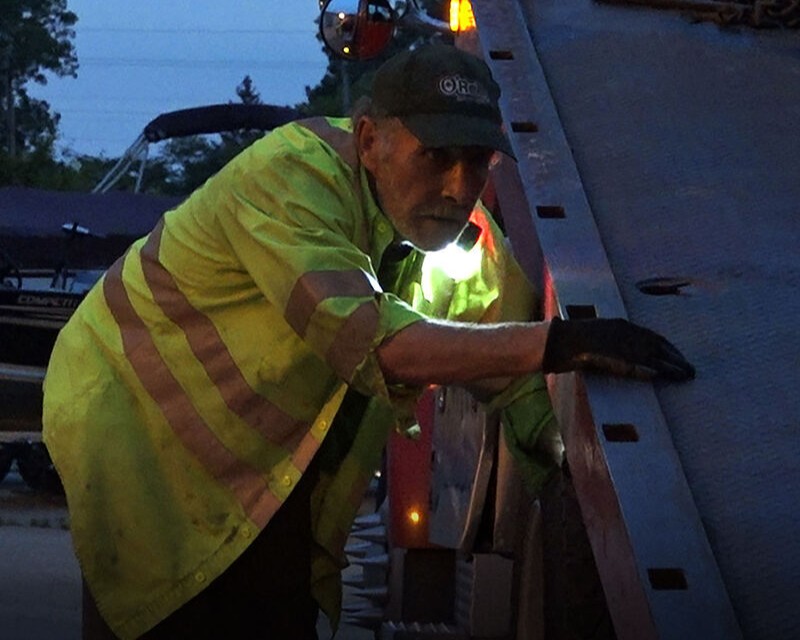
Beyond the Uniform: Creative Use of Guardian Angel Gear
With a little creativity, Guardian Angel lights can enhance safety across the entire recovery scene.
Lighting More Than the Body
Guardian Angel lights aren’t just for uniforms. Crews have used them to mark:
- Damaged guardrails
- Oil spill zones
- Abandoned vehicles awaiting a second tow
- Curbs hidden by snow or debris
The magnetic base makes them easy to mount on metal or flat surfaces, with no tools required. One light can define an entire hazard zone.
Tool-Free Deployment in Emergency Situations
In fast-moving scenes like pileups or multi-car wrecks, seconds matter. Instead of relying on fixed truck lighting, operators can use Guardian Angel devices to light fallen signage, detour paths, or roadside obstacles — instantly.
Multi-Light Configurations for Complex Scenes
Many operators carry more than one light. One stays mounted to the shoulder for mobility. Another is reserved for marking the rear of a loaded vehicle. For multi-truck responses, crews can assign lights to various entities on the site. That’s how you can ensure a recovery scene that’s not only visible but carefully coordinated.
Build a Culture of Safety — Not Just a Checklist
Policies and gear matter, but they’re only effective when backed by a culture that places an emphasis on safety every time. That starts at the top.
If you’re a manager or fleet leader, you should:
- Model proper gear usage during daytime calls, not just night shifts
- Assign safety roles per scene (e.g., cone placement, light positioning)
- Review past jobs using dashcam or scene photos to improve visibility setups
The most dangerous hazards are often the ones we stop noticing: daylight glare, unpredictable traffic, or bad weather that compromises standard lighting.
As a tow-truck provider, whether you manage a fleet or work as an independent operator, it’s your job to see what others miss and prepare for it. That means investing in visibility tools — like Guardian Angel towing lights — that can travel everywhere, and deploying lighting strategies that adapt to real-world conditions.
Sources:
- WRDW-TV News 12. AAA: A tow truck driver is killed every 6 days.
- AAA Foundation for Traffic Safety. Roadside Assistance Providers Fatally Struck by Vehicles at the Roadside: Incidence and Characteristics – Jan 2024.
- AAA Newsroom. Grim Reminder: Latest Roadside Tragedies Underscore Need for Drivers to Slow Down, Move Over.
